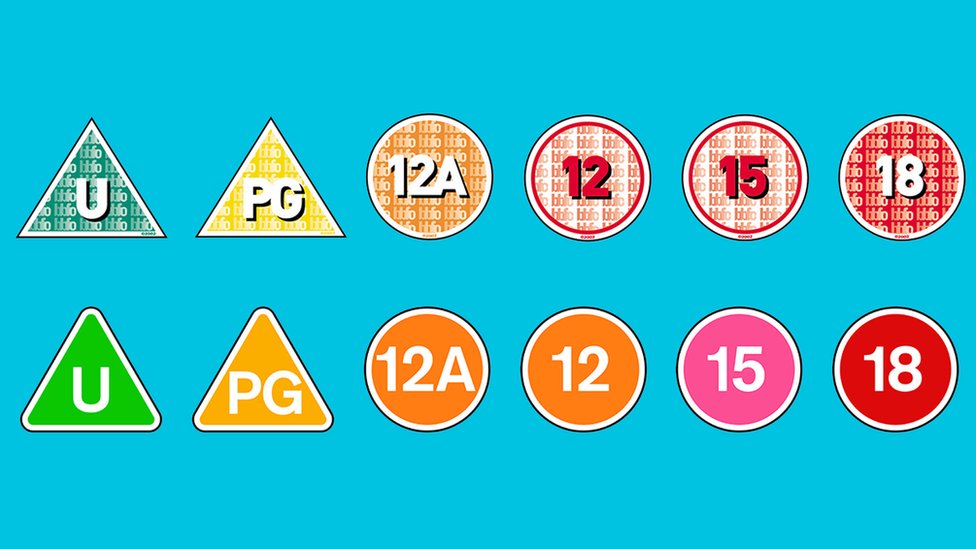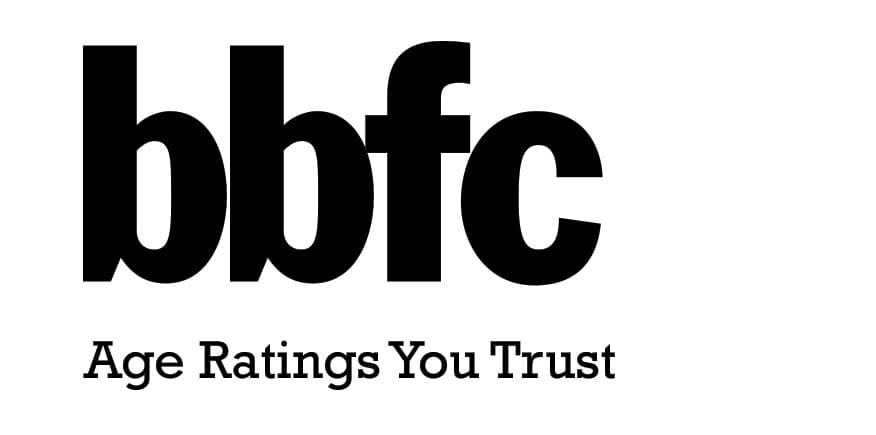For anyone working or even interested in film in the UK, there are few resources as invaluable as the website of the British Board Of Film Classification. The BBFC are the people required to watch and assign age ratings to every cinematic and DVD/Blu-Ray release. You’re a cinema manager needing to know the running times of the latest releases? The BBFC’s site will tell you, to the exact second. A community cinema worker unsure if the classic horror film you’re programming is still an 18 or has gone down to 15? Every individual classification of a film is easy to find on the BBFC’s site. A collector trying to find out how many of a certain director’s films have been released on our shores? If it’s been released here, the BBFC will have classified it and it’ll be in their database. By law, every film and home media release must go through the BBFC. Well, there were few resources as invaluable as the BBFC’s site, until a few weeks ago.
The BBFC have, over time, gained a reputation as the most open, transparent film classification board in the world. America’s is notoriously secretive – their refusal to reveal anything about their workings was the subject of the 2006 documentary film This Film Is Not Yet Rated. Despite their history of cutting and sometimes even banning films, the BBFC have hidden nothing. In 1992, their infamously scissor-loving head censor James Ferman went on TV and claimed he’d never pass the controversial horror film Henry: Portrait Of A Serial Killer for video release, believing it could be “dangerous” if viewed at home by the wrong people. A year later, he relented, albeit after heavily editing the most graphic scenes.
In more recent years, the BBFC have allowed the public to talk to them on Twitter, and use large-scale public research when revising their classification guidelines every few years. So why have they now just wiped decades upon decades of cut and banned films from their website, and removed the ability to search by actor, director, studio? Why are they, seemingly, trying to hide their past?
The BBFC have been dogged by a fear of violence’s effect on the public for decades, never more so though than in the aftermath of the “video nasties” media furore of the mid-1980s. The advent of home video in the UK saw distributors – and anyone who fancied being a distributor and had a bit of money to spare – releasing masses of cheap, but very gory horror films, which ended up being big hits. Well, with punters – the Conservative government under the thumb of Margaret Thatcher, moral campaigner Mary Whitehouse and the police weren’t fans. Scaremongering headlines such as “BAN THE VIDEO NASTIES” were emblazoned across newspapers as the media whipped up such a frenzy about these films – including the luridly-titled likes of The Driller Killer, Axe and Cannibal Holocaust – that the police were dispatched across the country to raid video shops and confiscate them, all on a list drawn up by the Department Of Public Prosecutions. People were taken to court and even jailed, the videos found obscene under the law and literally destroyed.
In the years that followed, the BBFC, led at the time by Ferman, became legally obligated to begin classifying videos under the new Video Recordings Act. Following the shooting spree in Hungerford later in the 80s, they tightened their approach on violent videos, believing that video technology would mean potential psychopaths would rewind and watch the most gruesome scenes over and over again. Ferman certainly wasn’t known for being a lover of horror films – he infamously turned up to a screening of The Texas Chainsaw Massacre at London’s National Film Theatre in 1974 and, after the film, told the audience “It’s alright for you middle-class cineastes, but what would happen if a factory worker from Manchester were to see it?”. He subsequently banned the film.

Since launching their website in 1998, the BBFC have added every single classification to their database, all the way from the first films they classified in the 1910s to what they watched yesterday. Their database was hugely valued by film lovers and industry professionals alike, thanks to its meticulously detailed information and ease of access. To anyone interested in censorship like myself, it was the best way to find out what had been cut, by how much and, for films classified since 2000, exactly what had been removed.
The BBFC’s strict approach to violence following the nasties scare continued well into the 1990s, with many mainstream action films being heavily cut to make them “morally suitable” for British audiences. Arnie’s 1996 actioner Eraser had a staggering three and a half minutes removed for its video release. Virtually all of Steven Seagal’s 90s output was cut – Under Siege 2 lost two full minutes from its video release, despite being completely uncut at the cinema.
Searching the BBFC’s database now though, and there’s no sign of any of these films having faced Ferman’s wrath – all are listed as always being passed uncut. Going further back, films in the early days of cinema would often be cut for “decency” issues that seem quaint today – these are also similarly listed as always uncut. Films banned outright, from the shlocky 80s horrors turned away in the wake of the nasties such as Slumber Party Massacre II to the handful of recent ones such as 2015’s Neo-Nazi home invasion horror Hate Crime and the resubmission of the former video nasty Love Camp 7 earlier this year, aren’t listed on the site at all. You’d never know anyone had tried getting them classified.
This sudden altering of history is bizarre and unexpected – the BBFC do still occasionally cut films, albeit only when the distributor requests a lower certificate or (rarely) there’s a breach of UK law, and newer cut films are still listed as such. Do they not want people to know they used to chop films to pieces? The cutting and banning of violent films during the 80s and 90s is an important part of UK film history that even involved changes being made to the Criminal Justice Act. Yet, according to the BBFC’s new website, none of this ever happened.

The removal of the advanced search function also makes the BBFC’s database practically unusable unless you’re looking for a specific title. You can no longer search by actor, director, studio, certificate, year – all useful to cinephiles, for various means. The BBFC altered the database one afternoon last month – just that morning I’d been using it to determine how many Blaxploitation films MGM had released on DVD. I was able to find out, but now I’d have to trawl through eBay and Amazon, which could be inconclusive. It also makes things difficult for students researching film censorship, or anything involving the nasties and the video violence era.
Thomas, 22, is a Film and Spanish student at the University of Leeds – he’s doing his dissertation on the BBFC and their US counterpart the MPA, and naturally needs the BBFC’s website for his research. “Cuts info being absent from this new website is extremely irritating as it makes it much harder to find examples to include in my research!” he tells me. The BBFC were met with a flood of annoyed tweets when their new website was unveiled, many echoing Thomas’s grievances. “It’s… gone from being one of the great assets of film information to absolutely useless in one fell swoop” tweeted @EthanRunt. “The new layout is trash, it’s all flashy but contains no useful information” @CommanderZx2 complained. “Trying to research cuts to movies is impossible” @karmicghost told them. The BBFC have restored one old feature initially missing – their page of recently classified films – however, the majority of the useful features from the old site are seemingly gone for good.
Dave runs Melon Farmers, a UK-based censorship watch website. Established more than 15 years ago, the site holds a vast and detailed database of BBFC cuts information, compiled over time. Updating it in the future though won’t be easy, as while the BBFC’s new database does admit when new films are cut, it no longer says by how much – it used to give exact minutes and seconds. “The replacement database has been prettified, censored and massively dumbed down. Nearly all cuts information has been removed; banned titles are missing entirely, and the design of the new search facility is frankly shoddy” Dave says.
There’s no reasonable explanation for this, beyond the presumption that the BBFC are now regretting their history of cuts and bans and, much like their American sisters, want to erase all trace of their decades upon decades of meddling with films. I mean, a public body doesn’t wipe significant portions of its history from its database for no reason. Most worrying, though, is the fact that they figured they could get away with this and nobody would care. Not to completely paint the BBFC into the conspiracy theorist corner, but perhaps, in an age where misinformation and fake news too often flies further than the truth, maybe the BBFC thought this was no big deal? It is – I’m sure the many filmmakers whose films were cut against their wishes wouldn’t like to think that the BBFC are now denying their treatment of their works.
Kathryn Bigelow (The Hurt Locker) and James Cameron (Avatar, The Terminator) butted heads with the BBFC in the mid-90s when their sci-fi thriller Strange Days was cut to reduce a scene of sexual violence. The scene in question is shot discreetly and is as adversive a portrayal of sexual violence as possible. Yet, despite Bigelow and Cameron’s pleas, Ferman brought out the scissors for fear the same wrong’uns who’d delight in repeatedly rewatching the gruesome murders in Henry would get their jollies from this too. Strange Days has still never been passed uncut by the BBFC, although, in fairness, nobody has submitted it for a new certificate in over twenty years. It would pass uncut now, but as it stands all UK releases of the film are cut, though looking at the film’s entries on the BBFC’s new site you’d never know it ever had a single frame removed. It’s bordering on sinister.
When Coronavirus hit the United Kingdom early in the year, the Prime Minister Boris Johnson’s special adviser, Dominic Cummings – already a controversial figure due to a very public tug-of-war inside No. 10 involving eugenics – edited his public blog to make it seem as if he had predicted the pandemic. Cummings was rightfully called out for this. What he did isn’t really any different to what the BBFC have done – altered online records to change the truth of the matter. Those high up in Downing Street can’t get away with this, so why can the country’s film classification board?

The BBFC’s slogan, visible next to their logo at the top of their website, used to be “Age Ratings You Trust”. When they introduced their new, slightly tweaked classification guidelines at the beginning of 2019, they also changed their tagline – it’s now “View What’s Right For You”. Presumably, they knew public trust was dwindling – who can, or would even want to, trust an organisation that sees no problem with erasing nearly a century of important historical information from the public domain? The BBFC, not content with not censoring films very often any more, have turned the scissors on themselves.
Words by Scott Bates
Support The Indiependent
We’re trying to raise £200 a month to help cover our operational costs. This includes our ‘Writer of the Month’ awards, where we recognise the amazing work produced by our contributor team. If you’ve enjoyed reading our site, we’d really appreciate it if you could donate to The Indiependent. Whether you can give £1 or £10, you’d be making a huge difference to our small team.
